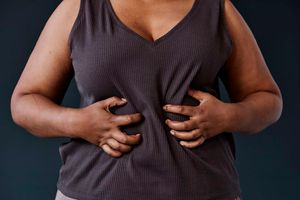Women, girls suffer the most from climate displacement

A woman at Danisa Refugee camp in Tana River on December 21,2023. The effects of climate change have forced women and girls to travel far to obtain daily supplies.
What you need to know:
- Women in East Africa tend to carry the burden of domestic care and work; and have fewer opportunities to influence decision-making to mitigate and cope with climate change impacts.
- Climate change leads to resource scarcity, making these tasks increasingly difficult and dangerous.
As the dust settles on COP28, the push on climate mobility and gender to protect the most vulnerable from the impacts of climate is intensifying.
The message couldn’t be clearer - while commitment grows, action continues to lag behind particularly in developing countries as the consequences of climate change increase the burden for women and girls.
The latest analyses of trends have shown how gender shapes the causes, experiences and consequences of migration in a changing climate.
A joint study on women, gender inequalities and climate-induced migration in East Africa by the High Commissioner for United Nations Human Rights and the United Nations Environment Programme states that globally, environmental change is expected to have an increasing impact on internal and international migration.
Forecasts of the number of people who will migrate either internally or internationally by 2050 due to climate change vary from 25 million to 1 billion, with 200 million being the most widely cited. Most of this mobility is expected to be in the form of internal migration.
To address the emerging concerns, the UN Decade of Action to Deliver the Sustainable Development Goals (2020-2030) has called for more inclusive approaches to resolving global challenges, including gender inequality and climate change.
The research by the International Development Research Centre (IDRC) provides clear evidence of what should be fairly obvious – women’s participation and leadership are key to addressing climate change and migration issues.
Women in East Africa tend to carry the burden of domestic care and work; and have fewer opportunities to influence decision-making to mitigate and cope with climate change impacts.
Climate change leads to resource scarcity, making these tasks increasingly difficult and dangerous.
Women’s socio-economic position and traditional role in society as caregivers also limit their movement to adapt to climate change.
Many have been exposed to discrimination and gender-based violence and this has prevented them from having equitable access to resources, services, information, employment and decision-making processes.
In most of the 47 counties of Kenya in far-flung areas like Garissa, Lamu, Turkana, West Pokot, Tharaka Nithi and Elegeyo Marakwet among others, thousands of women and girls have been affected by climate change.
The effects of climate change have forced women and girls to travel far to obtain daily supplies, leaving less time for paid work and further potentially exposing them to greater risk to their safety as they are the primary providers of food, water and fuel.
In rural regions of East Africa in particular, where dependency on subsistence farming is high, women are critical to food security. There is, however, no accurate reliable data on the number of women affected by climate-induced migration in Kenya and the entire East Africa.
The World Bank’s Groundswell report predicts that the East Africa sub-region could see up to 12.1 million migrants on the move by 2050.
IDRC states that the impacts of climate change, including extreme weather events, affects the livelihoods, production and security of people around the world, particularly the most vulnerable communities.
IDRC Internal Displacement Monitoring Centre found that an average of 21.5 million people were forcibly displaced due to sudden weather-related hazards each year between 2008 and 2015.
The World Bank estimates that up to 216 million people could be forced to migrate within their own countries by 2050.
“The impacts of climate change on six regions highlight that climate migration "hotspots" will emerge as soon as 2030 and intensify by 2050, hitting the poorest parts of the world hardest,” states IDRC in a statement during the just-ended COP28 in Dubai.
Around 3.3 to 3.6 billion people live in climate hotspots including Sub-Saharan Africa, which accounts for 86 million internal migrants, 19 million more in North Africa, and 40 million migrants expected in South Asia.
“Adopting a more gender-responsive or gender-sensitive approach will help foster women’s important role in leading sustainable transformation,” says Ms Wessam El Beih, IDRC’s regional director for the Middle East and North Africa.
Ms Baboki Kayawe, a journalist based in Botswana covering education, health, agriculture, gender, development, water and climate change, says the migration is harming women and girls more than men and boys.
“This often leads to increased cases of sexual exploitation, poor health and lack of education,” says Ms Kayawe.
According to UN High Commissioner for Human Rights Michelle Bachelet, when women are displaced, they experience a greater risk of gender-based violence, including sexual assault, human trafficking and forced child marriage.
"While they sleep, wash, bathe or dress in emergency shelters, tents or camps, the risk of sexual violence is a tragic reality of their lives as migrants or refugees," Ms Bachelet says.





